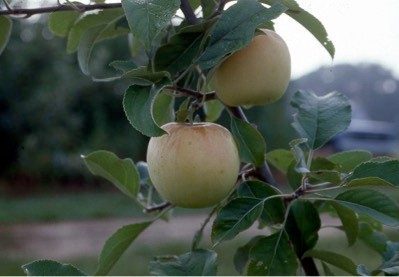This content is for informational purposes only and does not constitute financial, legal, or professional advice. Always consult a certified professional before making financial or investment decisions. As an affiliate, we may earn a commission from qualifying purchases made through links in this post at no extra cost to you.
Storing apples in cardboard boxes in cool and dark places is a tried-and-true method to preserve their freshness and extend their shelf life. Apples are a versatile and beloved fruit, and by utilizing the right storage techniques, we can enjoy their crispness and flavor for an extended period, even beyond their typical season.
The combination of using cardboard boxes, maintaining a cool temperature, and providing darkness create an optimal storage environment that helps slow down the ripening process and prevents spoilage.
I will explore the benefits and considerations of storing apples in cardboard boxes in cool and dark places, delving into the specific methods and tips to ensure successful long-term storage. By understanding the principles behind this storage method, we can savor the delightful taste of apples throughout the year.

Process of Storing Apples in a Cool and Dark Place When You Don’t Have Enough Refrigeration System
If you don’t have access to refrigeration but still want to store apples in a cool and dark place, here is a process you can follow:
Choose the Right Apples:
Select apples that are firm, free from bruises, and without any signs of decay. Apples in good condition will have a better chance of staying fresh during storage.
Sort and Inspect:
Before storing, sort through the apples and remove any damaged or spoiled ones. It’s important to store only the best-quality apples to prevent them from affecting others.
Find a Cool and Dark Spot:
Look for a location in your home that provides a cool and dark environment. Ideally, the temperature should be between 32°F (0°C) and 45°F (7°C), with low humidity.
Use Crates or Boxes:
Place the apples in wooden or plastic crates, or sturdy cardboard boxes. Make sure the containers have adequate airflow to prevent moisture buildup. Avoid using airtight containers, as they can trap moisture and promote rotting.
Layering and Separation:
Place a layer of apples in the crate or box, making sure they don’t touch each other. To prevent bruising, you can add a layer of straw, shredded newspaper, or cardboard between the apples. Repeat the layering process until the container is full, but avoid stacking the apples too high to prevent crushing.
Monitor Regularly:
Check the apples regularly for any signs of decay or spoilage. Remove any apples that show signs of deterioration to prevent them from affecting the others.
Maintain Airflow:
Ensure there is adequate airflow around the stored apples. Avoid placing them in a sealed or tightly packed area, as this can trap moisture and promote rot.
Darkness:
Keep the storage area dark or cover the crates/boxes with a dark cloth or tarp to protect the apples from light exposure. Light can accelerate the ripening process and cause the apples to deteriorate more quickly.
Check Temperature and Humidity:
Monitor the temperature and humidity of the storage area regularly. If the temperature rises or the humidity becomes too high, consider adjusting the storage location or finding an alternative method.
Remember, apples stored without refrigeration will not last as long as those kept in a refrigerator. It’s important to consume them within a few weeks and regularly inspect them for any signs of spoilage.

Storing Apples in Cardboard Boxes In Cool & Dark Places (8 Steps You Should Follow)
Apples are a beloved fruit known for their crispness, juiciness, and nutritional value. To enjoy their deliciousness throughout the year, proper storage is crucial. Storing apples in cardboard boxes in cool and dark places provides an effective method to prolong their freshness and prevent spoilage. This essay explores the various techniques and considerations for storing apples in such conditions.
Step – 1: Choosing Suitable Cardboard Boxes:
When storing apples, it is essential to select appropriate cardboard boxes. Opt for sturdy boxes that are clean, dry, and free from any chemicals or odors. Ensure the boxes are of an appropriate size to accommodate the number of apples you plan to store.
Step – 2: Sorting and Inspection:
Before storage, sort through the apples and remove any damaged, bruised, or rotting fruits. Carefully inspect each apple to ensure they are in good condition, as one rotten apple can spoil the whole batch. This initial step is crucial for maintaining the overall quality of the stored apples.
Step – 3: Preparing the Boxes:
To create a suitable environment for storing apples, start by lining the bottom of the cardboard box with a layer of clean, dry straw or crumpled paper. This layer acts as a cushioning material and helps absorb excess moisture, preventing direct contact between the apples and the box.
Step – 4: Packing the Apples:
Arrange the apples in the cardboard box, leaving some space between them for proper air circulation. Depending on the quantity and type of apple, you can either place them in a single layer or stack them. However, be cautious not to overload the box, as excessive weight can lead to bruising or damage.
Step – 5: Providing Darkness:
For optimal Apple storage, it is crucial to protect them from light. Exposure to light can trigger premature ripening and lead to a deterioration in quality. Therefore, store the cardboard boxes in a cool and dark place, such as a cellar, basement, or pantry. If necessary, cover the boxes with a cloth or keep them in a dark corner to minimize light exposure.
Step – 6: Ensuring Proper Ventilation:
Although darkness is important, adequate ventilation is equally crucial. Proper airflow helps maintain the apples’ freshness by reducing moisture build-up and preventing the growth of mold or rot. You can achieve this by leaving small gaps or perforating the sides or lid of the cardboard box. Striking the right balance between darkness and ventilation is essential for successful long-term storage.
Step – 7: Controlling Temperature and Humidity:
Apples store best in cool environments with controlled temperature and humidity. The ideal temperature range for storing apples is between 32°F (0°C) and 40°F (4°C). The humidity level should be around 90% to prevent the fruit from shriveling or drying out. A cool, dark cellar or a refrigerator set to the appropriate temperature can serve as an ideal storage location.
Step – 8: Regular Monitoring and Maintenance:
To ensure the longevity of stored apples, it is essential to monitor and inspect them regularly. Check for any signs of spoilage, rot, or pests. Remove any damaged or decaying apples promptly to prevent them from affecting the others. Maintaining a clean and hygienic storage environment is crucial for preserving the freshness and quality of the apples.
If You Love This Article Then Help Fruit Gardener By Purchasing On Amazon By Using This Link.
Click Here For Amazon Home Page
Related Topic You Should Read –
-
How to Store Apples Without Refrigeration – 5 Effective Methods
-
Do Apples Go Bad In The Fridge – 4 Factors that Affect the Freshness of Apples
-
9 Steps of How to Store Apples in Fridge to Keep Them Fresh And Crisp
-
How to Store Apples Long Term – 7 Effective Ways To Store Apples
-
How to Store Apples in a Barrel – 9 Essential Steps For Long Term Preserving
-
How Long Do Apples Last at Room Temperature
Storing Apples For Long Terms
Frequently Asked Questions
Q: Why should I store apples in cardboard boxes?
A: Storing apples in cardboard boxes helps maintain proper airflow and protects them from light exposure, which can lead to premature ripening and deterioration.
Q: Why is it important to choose sturdy cardboard boxes?
A: Sturdy boxes ensure that the apples are adequately protected and prevent the boxes from collapsing under the weight of the fruit.
Q: Can I store apples with bruises or damages?
A: It is best to remove bruised or damaged apples before storage, as they can accelerate the spoilage process and affect the quality of other apples.
Q: How should I prepare the cardboard boxes?
A: Line the bottom of the boxes with clean, dry straw or crumpled paper to provide cushioning and absorb excess moisture.
Q: What is the ideal temperature for storing apples?
A: The ideal temperature range for storing apples is between 32°F (0°C) and 40°F (4°C).
Q: How should I ensure proper ventilation?
A: Create small gaps or perforate the sides or lid of the cardboard boxes to allow for adequate airflow while maintaining darkness.
Q: Can I store apples in a refrigerator?
A: Yes, refrigerators can serve as excellent storage spaces for apples. Just ensure the temperature is appropriately set and the apples are protected from moisture.
Q: How often should I inspect the stored apples?
A: It is recommended to inspect the apples regularly, at least once a week, to check for any signs of spoilage, rot, or pests.
Q: Can I store different apple varieties together?
A: Yes, you can store different apple varieties together as long as they are in good condition. However, keep in mind that some varieties have different storage durations.
Q: How long can apples be stored in cool and dark places?
A: Apples can typically be stored for several weeks to several months in cool and dark places, depending on the variety and initial quality. Regular monitoring is necessary to maintain freshness.
End Line Of Storing Apples In Cardboard Boxes
Storing apples in cardboard boxes in cool and dark places provides an effective method to extend their shelf life and enjoy their deliciousness for an extended period.
By following the appropriate techniques, such as selecting suitable boxes, sorting and inspecting the apples, providing darkness and ventilation, controlling temperature and humidity, and conducting regular monitoring, one can successfully store apples and relish their flavors throughout the year.
Whether in a homemade cellar or a well-regulated refrigerator, this storage method ensures that the apples remain fresh, crisp, and ready for consumption whenever desired.


